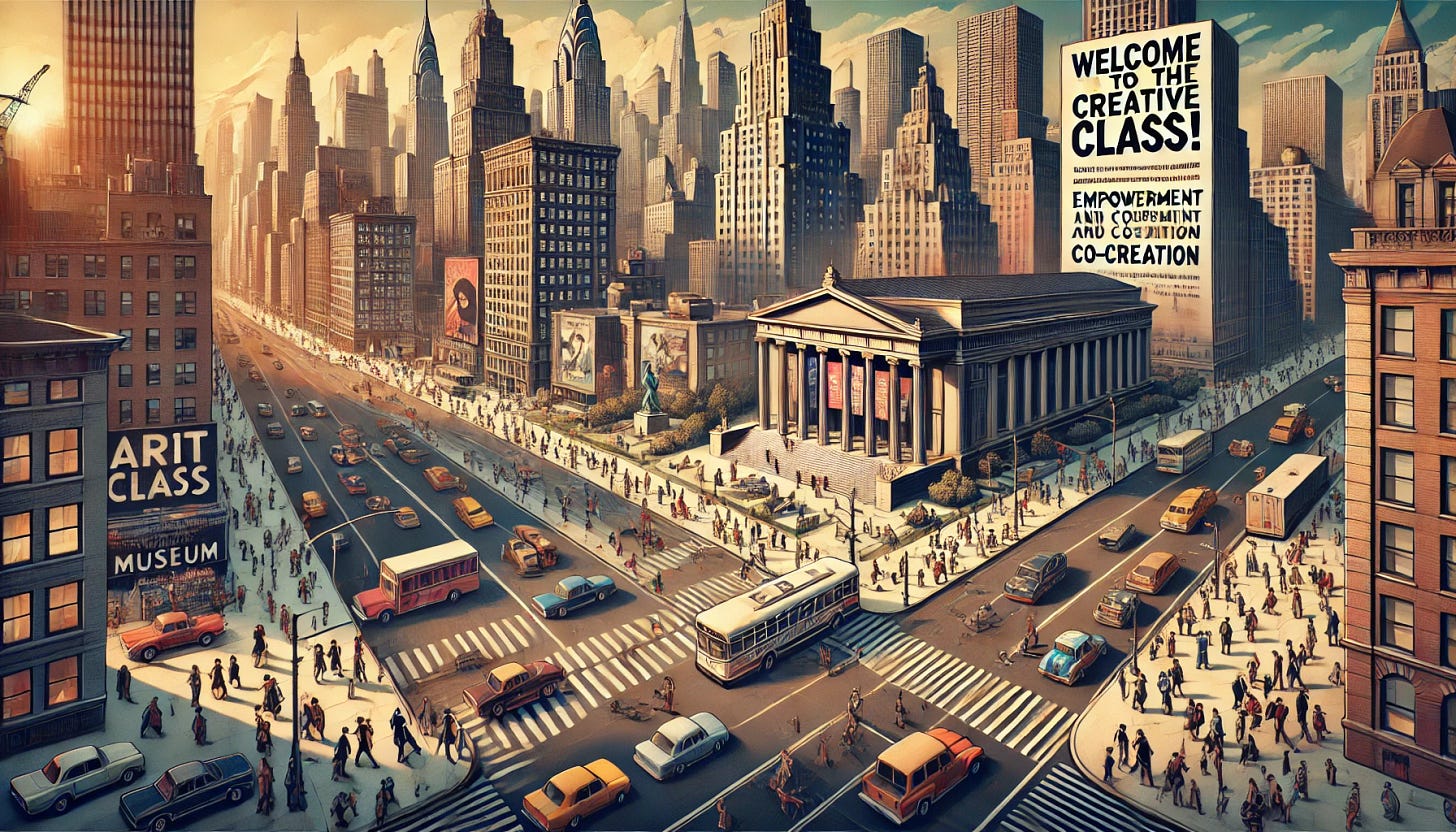At a team meeting last week we talked about planning donor engagement and managing our portfolios with new tools we are building in-house. You may know the kind of tool I’m talking about, a tool to help plan and execute those steps you take with the donor to get to the point of philanthropic inevitability (times the entirety of the fundraisers portfolio). I mentioned, ever so briefly, that ours is a creative profession. I didn’t want to skip over this, because at the core, what we do with those tools is empowering our creativity and perhaps freeing us up to really co-create the future with our donors.
Let me explain.
It seems like forever ago when Richard Florida published his hit The Rise of the Creative Class. Because it is (ooph!). It was 2002, a time when most computers still were bulky off-white chunks, with monitors the size of professional bakery mixers. For reference to the computers and how the era felt, check out the movie Office Space , it came out in 1999. The book, not the movie, describes the emergence and continued growth of a segment of the working population comprised of a “super-creative core” and creative professionals. You may be surprised that in this group he captured not just artists, designers, scientists, engineers, and the likes (the super-creative core), but also a broader group of creative professionals: people in law, finance (6’5”, trust fund, blue eyes, not a requirement), and other professions, who “draw on complex bodies of knowledge to solve specific problems.”
Sound familiar?

You may not feel like you belong to the creative class, or that fundraising is a creative profession in the first place. But allow me to make a case for it. Well, allow me to let Dr. Beth Breeze OBE make a case for it. In her exceptional book The New Fundraisers (2017) she spends a few pages on connecting the dots on fundraising as a creative profession.* Here are a few of her points:
The characteristics of fundraisers and who we are, track creatives pretty closely (majority female, passionate and driven by internal motivations, reliant on colleagues and collaboration) (Breeze, The New Fundraisers, 170-171)
Quoting Richard Florida, she pulls out the way our work aligns with his definition of the creative class “they are required to (…) think on their own, apply or combine approaches in unique ways to fit different situations, exercise a great deal of judgment, and perhaps try something radically new from time to time.” (Breeze, The New Fundraisers, 171)
Success in fundraising, like any creative profession, requires creativity and self-regulation: on the one hand a creative orientation to generate the best ideas for a particular challenge, donor, cause, on the other the application of certain management skills (prioritizing, planning, doing the actual work) to move it from idea to executed philanthropic act. (Breeze, The New Fundraisers, 171)
Hopefully at this point you already don’t think anymore that our work is all rinse and repeat (like my friend Jim Hodge would derisively call it), or assembly line work, or some other rote, quite boring, repetitive job. Our work can be lots of fun, can be very much other-focused, and relies quite a bit on essentially human traits, like empathy. You know what’s also a very human trait? Creativity. In The Creative Act, record producer Rick Rubin calls creativity a “fundamental aspect of being human.”
So, how does creativity express itself in our work?
Here’s a non-exhaustive list of the areas in which our work is being fundamentally human:
Engaging in conversation with a donor: what questions will elicit the answers you need about who they are, what they want, why they give?
Planning mission-based activities a donor might enjoy that add meaning and value to their life, and will help them along to the point of philanthropic inevitability
Developing a gift proposal, really considering how the gift may help bring about the vision of the world the donor and your organization align on, what the waypoints are, how you’ll measure progress, how you’ll know when it’s accomplished
Showing the donor in their preferred way how their gift is making a difference, to tell the stories, and show the data in compelling ways
Although fundraising is so much more than periodically showing up and asking for money to support a mission, even thinking through the appropriate amount for a gift can in itself be a creative act.
Much of what goes into our work is deeply reflective, inquisitive, problem-solving, thought-provoking, action inspiring, and deeply creative in thought, action, and consequence, and almost invariably, other-focused. This way, we are not only creatives in our profession, but also co-create the future with our donors.
Enjoy this process, this creative process, and hopefully you will find you’re not only in a creative profession, but you have found a creative calling.
Have a fundamentally human week,
Maarten
* I LOVE that the subtitle of this book is Who Organises Charitable Giving in Contemporary Society? It gives us, fundraisers, the credit we’re due as people of influence on the process by which philanthropy happens. The most vehement critiques of philanthropy typically disregard our existence altogether. Perhaps, sometimes, for the better.
